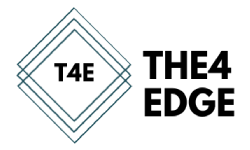When it comes to purchasing a home, understanding the ins and outs of home lending in Canberra is essential. With fluctuating interest rates, various types of loans, and different financial institutions to consider, the process of securing a home loan can seem daunting. However, with the right guidance, you can navigate the home lending landscape smoothly, ensuring that you find the best deal for your situation. In this article, we’ll explore everything you need to know about home lending in Canberra—from understanding different loan types to navigating the application process.
1. Understanding the Basics of Home Lending
1.1 What is Home Lending?
Home lending refers to the process by which financial institutions—such as banks, credit unions, or other lenders—offer loans to individuals for purchasing property. In return, the borrower agrees to repay the loan, typically with interest, over an extended period. Home loans are often the largest financial commitment people make in their lives, which is why it’s crucial to understand the key aspects before committing to one.
Home lending in Canberra is no different from the process elsewhere in Australia, but there may be local variations in terms of interest rates, fees, and loan options. It’s important to research the specific offerings available in the Canberra region to find the best loan products for your needs.
1.2 Types of Home Loans Available in Canberra
When considering home lending, there are several different types of loans you can choose from, depending on your financial situation and property goals. Some of the most common types include:
- Variable Rate Loans: With a variable-rate loan, your interest rate can fluctuate over time, depending on market conditions. This means your monthly repayments may change, making it harder to predict your future payments.
- Fixed Rate Loans: As the name suggests, fixed-rate loans have an interest rate that remains constant over the life of the loan. This can offer more stability in your payments, but you may miss out on potential interest rate drops.
- Interest-Only Loans: These loans allow you to pay only the interest on your loan for an initial period, typically one to five years. After that, you start paying off the principal as well, which can result in higher monthly repayments.
- Offset Loans: These are a type of loan where your savings or other deposits are offset against the loan balance, reducing the interest you pay on the loan.
- First Home Buyer Loans: In Canberra, as in the rest of Australia, first-time buyers may be eligible for special loan schemes with lower deposit requirements or government incentives to assist in getting onto the property ladder.
Each of these loan types has its pros and cons, so it’s important to consider your financial situation, long-term goals, and personal preferences before making a decision.
2. Navigating the Home Lending Process in Canberra
2.1 Pre-Approval: The First Step
Before you start searching for homes, it’s a good idea to get pre-approved for a loan. Pre-approval is a process where the lender assesses your financial situation and determines how much they are willing to lend you. This gives you a clear idea of your budget and helps narrow down your property search. Pre-approval can also make you a more attractive buyer to sellers, as it shows you’re serious and financially capable of following through with the purchase.
2.2 Comparing Lenders and Loan Products
Once you’ve got your pre-approval, the next step is to shop around for the best loan offers. Different lenders may have varying interest rates, fees, and loan terms, so it’s important to compare multiple options. You can compare rates using online comparison tools, but working with a mortgage broker can also be a great way to get expert advice on your options. Mortgage brokers have access to a wide range of lenders and can help you find the loan that best suits your needs.
When comparing lenders, consider not only the interest rate but also:
- Loan fees: Look out for setup fees, ongoing fees, and early repayment fees.
- Repayment flexibility: Some loans offer more flexibility when it comes to repayment schedules or allow you to make extra repayments without penalties.
- Loan features: Some loans offer additional features like redraw facilities or the ability to make lump sum payments to reduce the loan principal.
2.3 The Application Process
The application process for home lending in Canberra can be straightforward if you are well-prepared. After selecting a lender, you’ll need to complete a formal application. During this process, you’ll be asked to provide documentation such as:
- Proof of identity: Passport, driver’s licence, or another form of government-issued ID.
- Income verification: Recent pay slips, tax returns, or other proof of income to demonstrate your ability to repay the loan.
- Credit history: The lender will assess your credit score and history to determine your creditworthiness.
- Details of your expenses: Lenders will want to know about your monthly expenses, including rent, bills, and any other financial commitments.
Once the lender has reviewed your application and all supporting documents, they will provide you with an offer. If you accept the offer, you can move forward with the loan agreement and begin the process of purchasing your property.
3. First-Time Home Buyers in Canberra
3.1 Government Schemes and Assistance
The Australian government offers a range of incentives and support for first-time home buyers, which are also available in Canberra. These programs are designed to help reduce the financial barriers to homeownership and make it easier for first-time buyers to enter the property market.
Some of the key programs include:
- First Home Owner Grant (FHOG): This is a one-off grant to help first-time buyers cover the costs of purchasing or building a new home.
- Stamp Duty Concessions: First-time buyers may be eligible for reduced stamp duty on property purchases, which can significantly lower the upfront costs.
- First Home Loan Deposit Scheme (FHLDS): This scheme allows first-time buyers to purchase a property with as little as a 5% deposit without the need for lenders’ mortgage insurance (LMI), which can be a significant cost for buyers.
It’s important to research these schemes and check your eligibility early in the process. A mortgage broker or financial advisor can help you understand which schemes are available and how to take advantage of them.
4. Key Considerations Before Committing to Home Lending
4.1 Loan Term and Repayment Capacity
When choosing a home loan, it’s crucial to consider the loan term and your ability to meet the repayment schedule. While longer loan terms (such as 30 years) can reduce your monthly payments, they may end up costing you more in interest over time. Conversely, shorter loan terms can save you money in the long run, but your monthly repayments will be higher. It’s essential to assess your financial situation to ensure that the loan terms you choose are manageable in the long term.
4.2 Interest Rate Types
The interest rate is one of the most important factors to consider when taking out a home loan. Understanding the difference between fixed and variable interest rates is key to determining the right loan for you. Fixed-rate loans offer predictability, while variable-rate loans may offer lower initial rates but come with the risk of increases in the future. Speak with a financial advisor to help you assess which rate structure is right for your financial situation.
4.3 Understanding Fees and Charges
In addition to the interest rate, it’s important to factor in the various fees associated with a home loan. These may include application fees, valuation fees, and ongoing account maintenance fees. Some lenders may also charge for early repayment, which can be an issue if you plan to pay off your loan sooner than expected.
5. The Home Lending Market in Canberra
5.1 Local Market Conditions
The home lending market in Canberra is influenced by factors such as the local property market, interest rates, and the broader economic climate. Over the past few years, Canberra has seen a steady increase in property prices, making it a competitive market for home buyers. This has led to greater demand for home loans as buyers seek financial assistance to afford higher-priced homes.
5.2 Forecasting the Future
Looking ahead, interest rates and property prices will continue to influence home lending in Canberra. While property values are expected to stabilise in some areas, the availability of different loan products and government assistance schemes will play a significant role in making homeownership accessible for more people.
Conclusion: Finding the Right Home Loan in Canberra
Securing the right home lending in Canberra can be a game-changer when it comes to purchasing your dream home. With the wide range of loans available, understanding the key factors—such as interest rates, fees, and eligibility for government schemes—is essential. Take the time to research your options and consult with professionals to ensure you’re making the best decision for your financial future. Whether you’re a first-time homebuyer or looking to refinance, finding the right home loan in Canberra will help you make your property dreams a reality.







